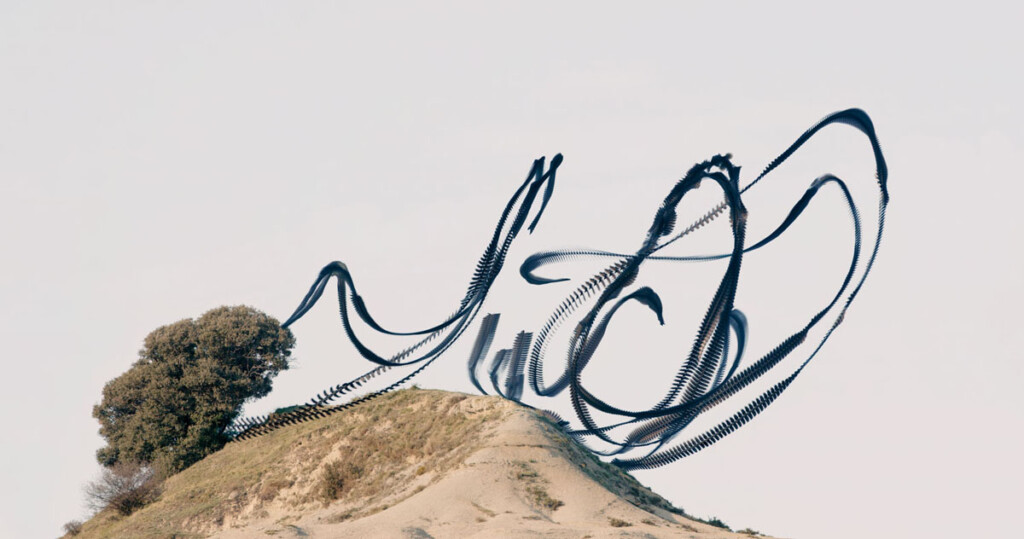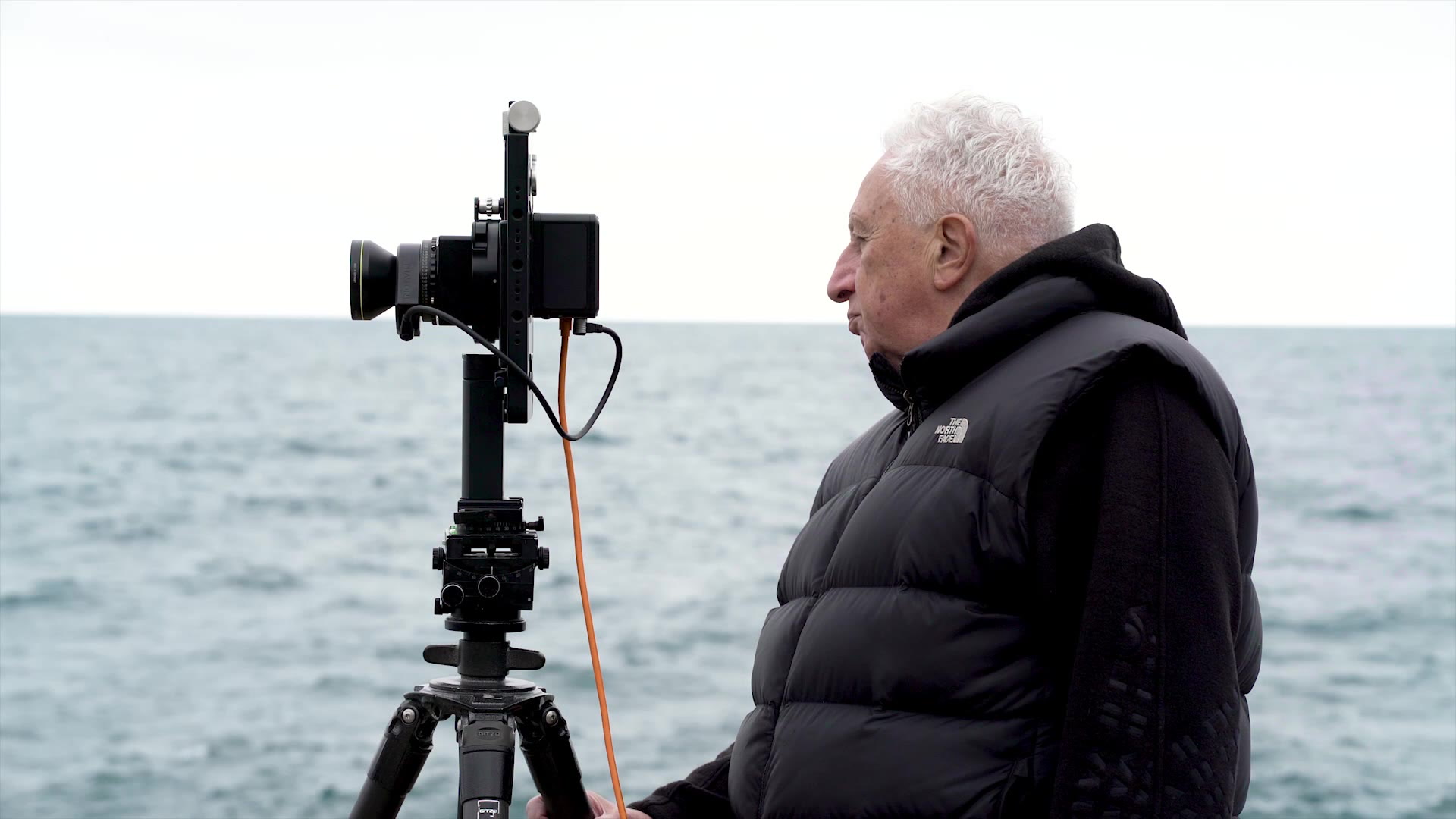- No products in the cart.
When movement becomes form. The Poststructuralist Photographic Art of Xavi Bou – by Uta M. Reindl
Mostly black lines of captivating geometry snake or swirl, some even in several strands, across the monochrome image grounds of the photographs — making one think of abstract drawings or paintings. The almost artificial perfection of the minimalist formations, however, gives the impression that they are mathematically generated. Yet the enigmatic structures show flight figures of birds recorded in the old method of chronophotography and modern computer technology. The Barcelona-born artist Xavi Bou has decontextualized them in the sense that they unfold on a cloudless sky, which he has transformed into a canvas through appropriate digital processing. According to the photographer, his fascination with birds and their movement is rooted in his childhood. Growing up in El Prat de Llobregat on the southern outskirts of Barcelona, allowed him to take countless walks in nature with his bird-loving grandfather. His great interest in nature remained with him even after his studies in geography and photography and during his stage working in the fashion photography sector. Soon after his debut in 2015, the artist received praise from numerous publications in daily newspapers or magazines of different orientations worldwide.

From an art-historical point of view, such a concentration on non-figurative representations began in Germany in the 1950s with “subjective photography”; it brings to mind its inventor Otto Steinert, who depicted reality without narrating, documented in a reportage-like manner and placed ornamentation as an external phenomenon in the picture. Incidentally, a similar case was that of the Catalan photographer Marcel Giró, who emigrated to Brazil. Xavi Bou is familiar with Eadweard Muybridge’s purely scientific chronophotography, which somehow is related to his ornithographic approach.
Meanwhile, Xavi Bou has given shape to the movements of numerous bird species in his ornithographic works, as well as exploring the medium of photography to visualize and archive these flowing and fluctuating energies. This, in the whole series and in concept, is quite like the photo archive of international utility buildings by the artist couple Hilla and Bernd Becher, which is more poststructuralist-conservationist than system-critical. Similarly, Bou strives to ensure that the beauty of the abstract formations he puts into the picture always allows for open reading. In other words: only a few of the lines drawn by birds with their flight figures, as well as the tangle of lines of entire flocks of birds, reveal their creators. This is true of the goldfinches appearing in the picture amidst the swirls of ochre lines —becoming the artist’s least appreciated photographic works precisely because of its clear legibility. Xavi Bou sees himself as a “curator” who tracks down the choreography of birds and makes it visible.” Very rarely, therefore, landscapes or cloud formations in the sky remain visible on the monochrome image backgrounds at the bottom of the picture and may hardly contribute to deciphering the actual image subject without relevant background knowledge.
The amazing geometry, precision, and complexity of the birds’ flight figures have been occupying the 43-year-old artist for around ten years now, and many of the cooperation partners for his artistic work are recruited from the bird world, or rather tracked down. Sparrows, swallows, swifts, seagulls, starlings, but also flamingos or eagles as well as other birds of prey… He finds them not only in the wild – very often nearby or even in places like Gibraltar or Iceland – but surprisingly also in the Gracia quarter in the heart of Barcelona.
In his videos, the artist records the collective development of bird flight lines, an entire bird migration, while he underlays the sequences with original sound or music composed by one of the artist’s friends. In the future, Bou plans to expand his archival practice with a new series of photographs — through sculptural abstractions, by using footage of insects in motion, and then digitally manipulating them to appear both three-dimensional and in the natural coloring of the animals.

























































































